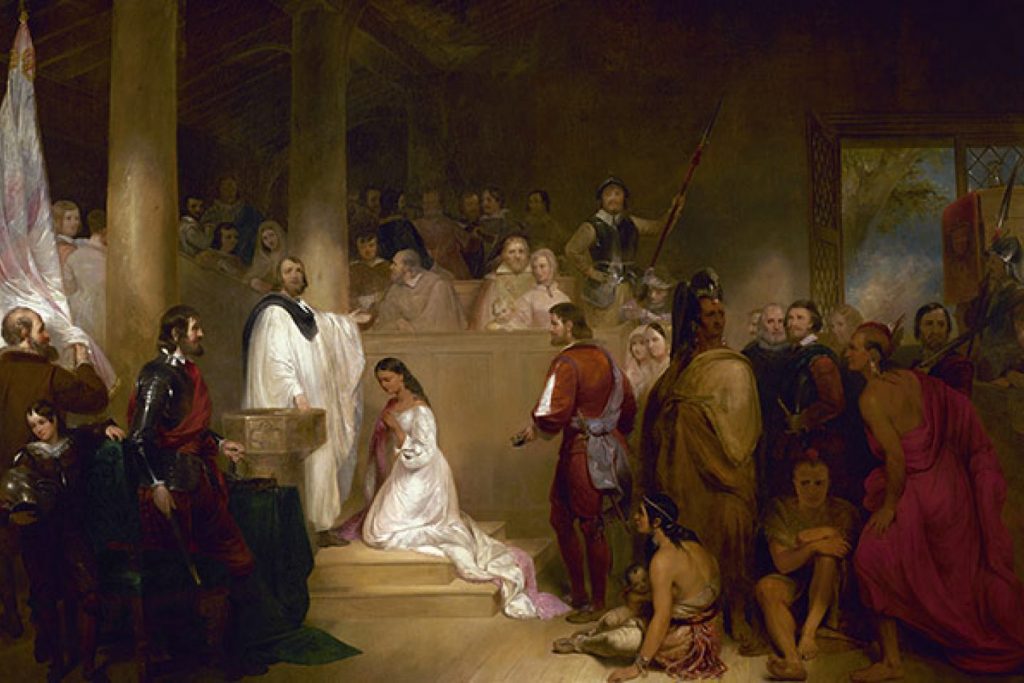
I felt that this painting, by John Gadsby Chapman in 1840, is in general a good depiction of how society sometimes views Indigenous peoples as being uncivilized — a common interpretation in historic texts of European origin. In the painting, it can be observed that the Indigenous peoples are not watching the ceremony; one individual even standing in an aggressive position, indicating their uncivil nature as viewed by the artist. Those of European descent on the other hand are bathed in God’s light, including Pocahontas who is in the centre of the painting, indicating her transition to being civil.
The notion of “oral culture” versus “written culture” is a strange one to process. Communication in the modern age, as many of you reading this well know, involves a lot of texting and emailing – written communication. But what about phone or zoom calls? Do we not still communicate and make agreements through oral means?
Stuart Rudner talks about oral agreements in his opinion article “If it’s verbal, is it binding?”; a short but interesting read on the legality of oral agreements. In legal terms, Rudner points out that “[i]t doesn’t matter whether it is set out in a formal legal document . . . or communicated verbally” (2019) in regard to negotiating agreements between employee and employer. Despite the notion that is often put forward that Western culture is a “written culture,” as discussed in Courtney McNeil’s article, with orality being a secondary aspect, the legality of oral agreements seems to disagree with that fact. If orality did not hold any legal binding properties, then this discussion might be vastly different.
As McNeil points out in their article titled “orality” (2007), cultures that rely on oral record keeping are often seen as being less educated. This is not a new notion by any means. I would even suggest that such beliefs are tied to Medieval Europe, during which time, the culture shifted from oral record keeping to written. This opened a whole new can of worms – one of the more fascinating aspects being that people suddenly needed documents which lead to them relying on forgeries. These forgeries, however, were documents that were crafted in order to prove ownership and often were not entirely false as we might initially think when hearing the word ‘forgery’ today. (For more information on Medieval Forgeries I highly suggest taking UBCs Medieval Studies 310 with Courtney Booker if you ever get the chance.)
In order to read these new documents, one needed to be literate – meaning that education was key, which at the time of the shift, was often limited to the wealthy (i.e. nobility and the Church). Superiority then became tied to being educated and literate as it often opened doors for those that were, while closing doors to those that weren’t. I would suggest that this notion of superiority is still embedded in Western culture today despite the best efforts of historians and anthropologists.
Erin Hansen makes a very interesting point in their blog post titled “Oral Traditions” that “written documents tend to be received automatically as authorities . . . and what is written down is taken as fact” (2009) where as oral story telling, traditional to Indigenous cultures, are viewed as being easily manipulated and untruthful. However, as Justice David Vickers is quoted to have said by Hansen, “disrespect for Aboriginal people is a consistent theme in the historical documents” (2009) suggests to me that even written documents are not exactly Truth-with-a-capital-T as many like to believe.
When it comes to literature, English students are often tasked with trying to make their own interpretations and derive meaning from the texts they are presented with. In history courses, questions of biases and subjective viewpoints often arise when reading age old texts. As a student of both, I like to mix and match these questions and look at what the author of the text wants or is trying to make me believe. It is then left up to me to decide if I want to believe or continue to question.
Works Cited
Chapman, John Gadsby. Baptism of Pocahontas. 1840, Capital Rotunda.
Hansen, Erin. “Oral Traditions.” Indigenous Foundations.arts.ubc.ca, 2009. https://indigenousfoundations.arts.ubc.ca/oral_traditions/. Accessed Jan 26, 2021.
MacNeil, Courtney. “orality.” The Chicago School of Media Theory, Winter 2007. https://lucian.uchicago.edu/blogs/mediatheory/keywords/orality/. Accessed Jan 22, 2021.
Rudner, Stuart. “If it’s verbal, is it binding?” Canadian HRReporter, September 30, 2019. https://www.hrreporter.com/opinion/canadian-hr-law/if-its-verbal-is-it-binding/321022. Accessed Jan 26, 2021.